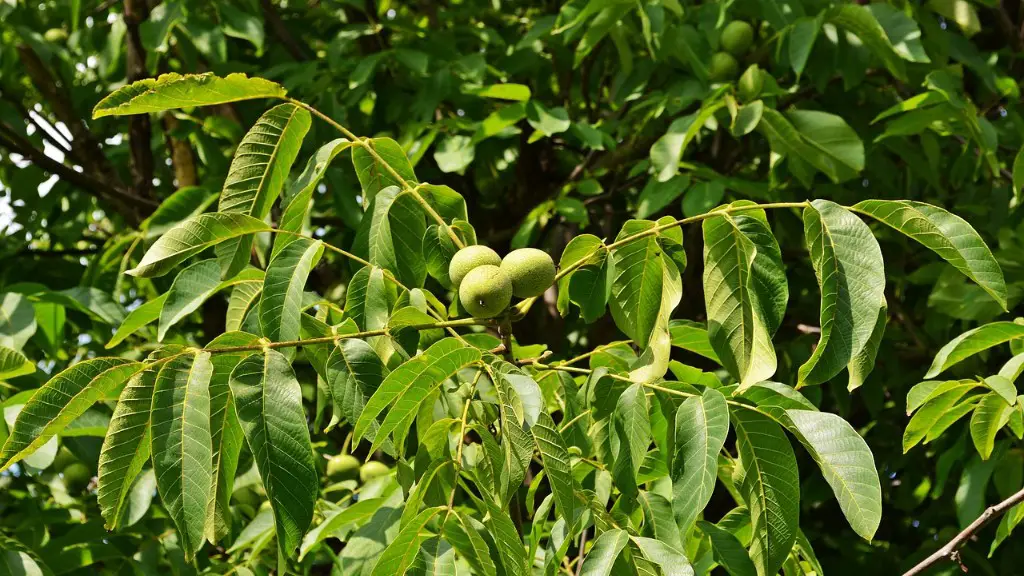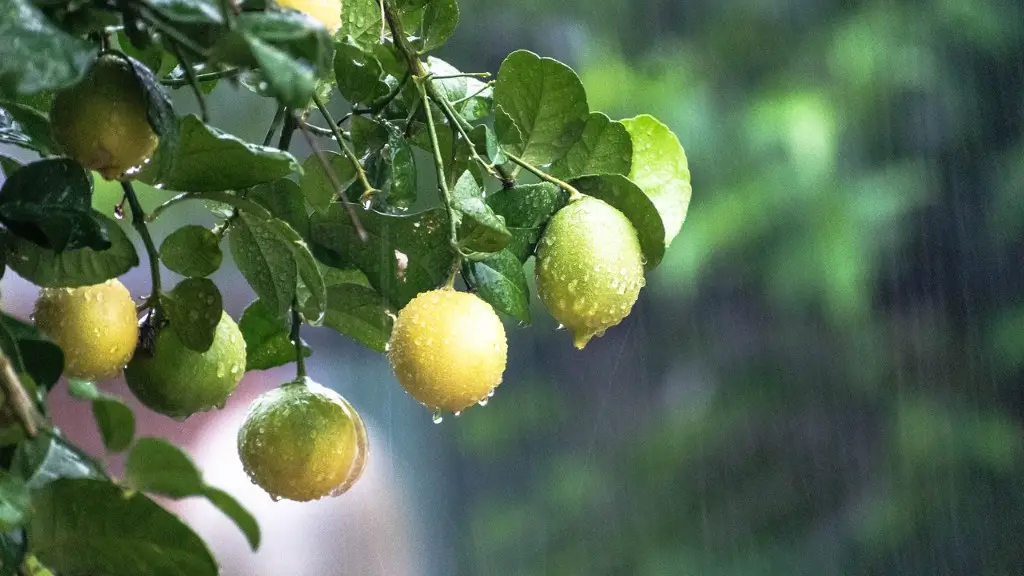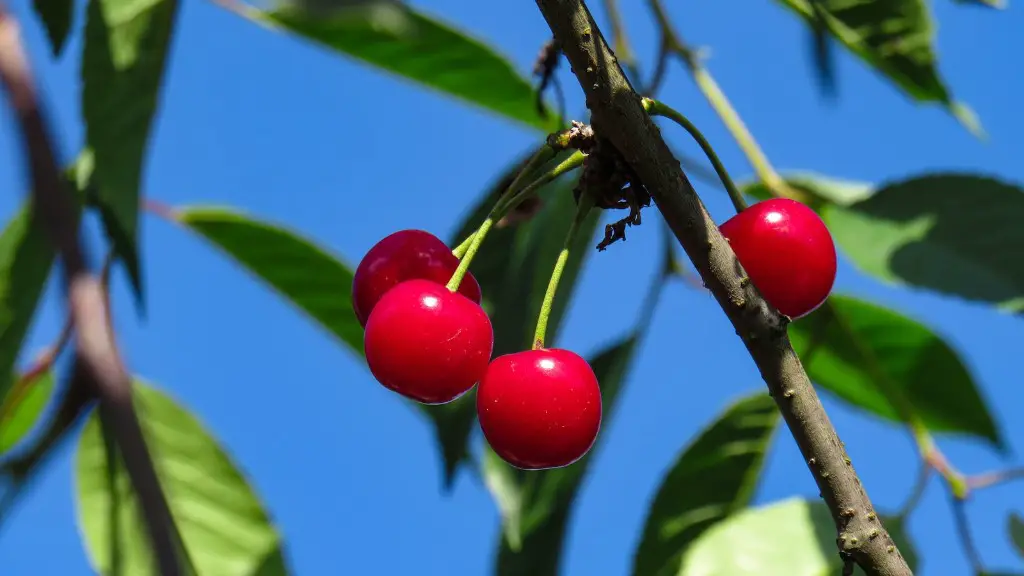Caring for a Meyer Lemon Tree can be a rewarding experience, but it’s important to understand how much water your particular tree needs. As a general rule, the amount of water your tree should receive will depend on a variety of factors, including the size, age, and location of the tree. To ensure your Meyer Lemon Tree remains healthy and productive, it’s important to provide it with adequate irrigation.
Newly planted trees require more water than established trees; they should be watered every two to three days, while established trees typically need watering once a week. When watering your Meyer Lemon Tree, the entire root zone should receive at least 1.5 – 2.5 inches of water per week in two or three shorter sessions, as opposed to one long session. Adjust amounts of water as necessary based on how quickly the soil dries out.
It’s especially important to water Meyer Lemon Trees during hot and dry periods. Moreover, during cold winter months, you may need to water your tree less frequently, as the tree will not need as much water. However, if temperatures are consistently above freezing, it may be necessary to provide your tree with a consistent amount of water. It’s also important to avoid overwatering, as this can be just as damaging as not watering your tree at all.
When determining how much water a Meyer Lemon Tree needs, it’s not just about the amount of water, but also the timing. Water your lemon tree in the morning or at night, as opposed to midday or afternoon, to reduce risk of water loss from evaporation and foliar burn. Also, your tree should be watered in the ground and not with hose or sprinklers to avoid creating standing water on the leaves, which can lead to fungal growth.
When providing water to a Meyer Lemon Tree, it’s best to apply the water slowly and evenly as to saturate the entire root zone. Trees should typically be watered with a hose or a soaker line. Additionally, mulching can also help keep the root zone moist, as it helps reduce soil moisture loss and suppress weed growth.
Monitoring Water Requirements
It’s important to monitor and adjust the amount of water your Meyer Lemon Tree receives from time to time. This will not only help you provide the tree with the optimal amount of water, but it can also help prevent overwatering, which can actually be harmful to your tree too. During the summer, check the soil moisture around your tree by inserting a finger up to two inches deep in the soil. If the soil is dry, it’s time to water. During the winter, when temperatures are cooler and rainfall is more frequent, there’s typically no need to be as diligent with your watering schedule, as the tree should get a sufficient amount of water from the rain.
Additionally, you can use soil moisture probes or a soil moisture meter to measure the amount of moisture in the soil. This can help you monitor the changing moisture levels and provide sufficient water to your tree at the right times. If you’re uncertain whether your tree is receiving enough water, you can also contact a qualified arborist for help.
Water Quality
In addition to determining how much water your Meyer Lemon Tree needs, it’s also essential to consider water quality when caring for your tree. Treat water with soil microbes and other beneficial bacteria to boost the natural environment of the soil. Tap water is generally fine, but if you’re concerned about chlorine or fluoride, consider collecting rainwater or using a reverse osmosis filter.
It’s also important to check that your lemon tree is not in a low spot where it can easily collect standing water. If your tree is standing in standing water, it can quickly become waterlogged, leading to root rot, nutrient deficiencies and other issues. If your tree is standing in standing water, consider raising the soil level or finding a spot with better drainage.
Fertilization
Fertilizing your Meyer Lemon Tree is another important factor to consider when trying to keep your tree healthy. Lemon trees generally require moderate levels of nutrient availability, so fertilizer should be applied minimally and in small amounts. Typically, a nitrogen-based fertilizer should be applied during the spring and early summer months, while a phosphorus-based fertilizer should be added in late autumn or early winter. Using the wrong type of fertilizer or applying the wrong amount can be damaging to the tree, so it’s important to follow the detailed instructions on the fertilizer package.
Checking Leaf Health
Checking the tree’s foliage is one of the best ways to gauge how much water your Meyer Lemon Tree is receiving. Healthy foliage indicates the area around the tree is well hydrated, while yellowing leaves generally mean there’s inadequate water. If leaves are turning yellow due to lack of water, consider increasing the frequency and amount of water the tree receives.
Pruning Strategies
Pruning your Meyer Lemon Tree is another important part of proper care and maintenance. Pruning helps promote health, maintain the desired size and shape of the tree, and reduce the risk of disease. Non-essential branches should be cutback, and dead or decaying branches should be removed. It’s important to note that removing too much foliage can cause stress on the tree, which can reduce the amount of water the tree retains and inhibit optimal growth.
Caring for the Roots
In addition to providing appropriate amounts of water, monitoring foliage health and applying fertilizers, it’s important to pay attention to the roots of your Meyer Lemon Tree as well. This includes checking the roots for signs of damage or disease, such as root rot or red thread fungal infection, which can occur in overly wet soils. It’s also important to make sure the tree is not standing in standing water and that the root zone is receiving adequate drainage. If the roots are not healthy, this can lead to impaired root function, water stress and poor growth.



